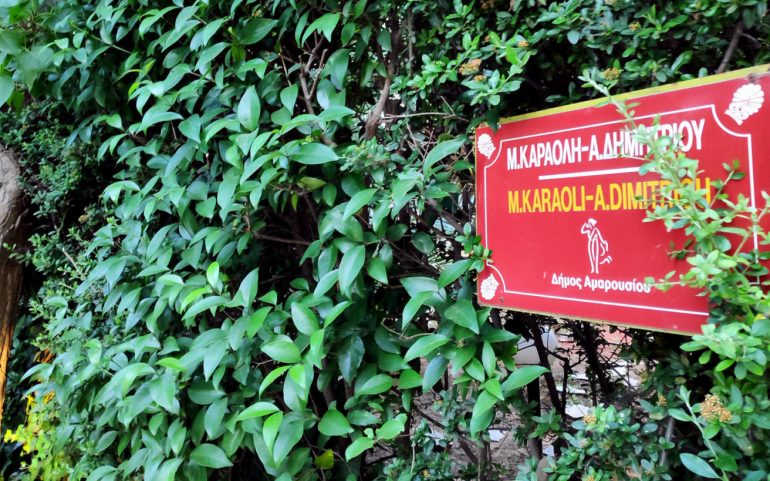The name of the street "Karaoli Dimitriou" is definitely heard by most. The story behind the naming, however, is less common. And if at first those who see the corresponding signs in Athens, Thessaloniki, Alexandroupoli, Larissa, Chania and other cities in Greece, but also in Cyprus, certainly think that it is a name, this is not really the case.
On the contrary, it is about the union of the names of two men, Michalakis Karaolis and Andreas Dimitriou, two young Greek Cypriots fighters of EOKA-National Organization of Cypriot Fighters that operated in Cyprus between 1955-1959, with the aim of self-determination of Cyprus, liberation from British Colonialism and finally the Union of Cyprus with Greece - and heroes of Cyprus, arrested by British forces and were hanged.
The story of Michalakis Karaolis
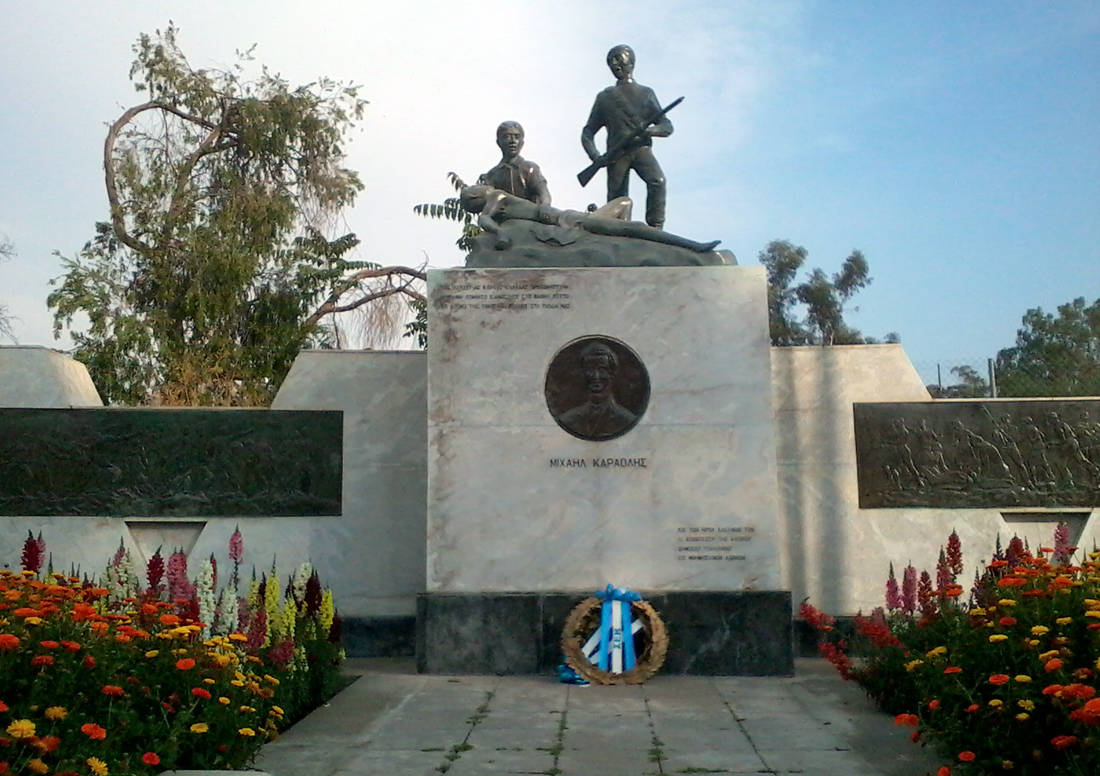
Michalakis Karaolis, born in 1933, was the fourth child of the Karaolis family who came from the middle strata of Cypriot society. Having graduated with a scholarship from the English School, he was considered to have a high level of education for the time, which would ensure his professional development in the public sector. He was one of the first members of the executive forces of EOKA (joined its ranks much earlier than April 1, 1955) created in Nicosia, with the aim of neutralizing members of the Police and their informants.
Together with his rival Andreas Panagiotou (executions were usually carried out by groups of two people) on August 18, 1955 he undertook the execution of police officer Herodotus Poullis, who had the "retsinia" of the traitor. He is a Greek Cypriot police officer of the Special Branch of the Police, a very important step for the collection of information about the EOKA.
The attempted assassination of Poullis, which was crowned with success, took place during an open demonstration by the left. Michalakis Karaolis was chased by those present, who thought that the target of the attack was the demonstration, blocking his way and forcing him to abandon his bicycle and run away.
Authorities later managed to identify him through his bicycle, and arrested him in November 1955 in an attempt to promote him to the highlands in order to join the EOKA guerrilla groups. The death penalty - imposed even on those who carried weapons - was a one-way street, based on the provisions that had just been included in the legal framework of the State of Emergency.
Although the bullet that killed Poullis did not come from Michalakis's weapon, but from Panagiotos's competitor, the English became very angry with him as throughout the interrogation he was adamant in surrendering his collaborators.
Who was Andreas Dimitriou?
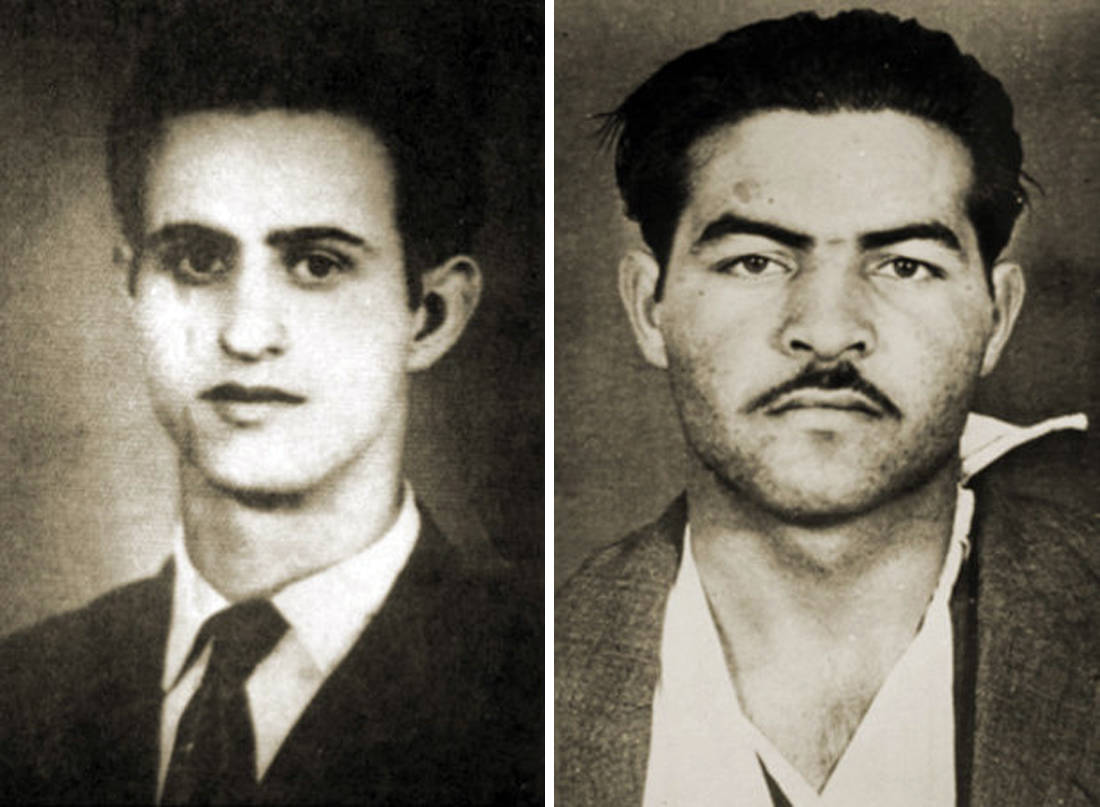
In contrast to Michalakis Karaolis, Andreas Dimitriou, born in 1934, came from a very poor, large family from Agios Mama in Limassol. He studied for only three years at the Night High School of Famagusta and then got a job.
The 21-year-old Andreas made his presence particularly felt within the organization, as he had a successful action in seizing weapons from the military depots of Famagusta, where he worked. The weapons that Dimitriou stole were promoted to various EOKA guerrilla groups, which until recently were equipped only with hunting weapons.
In November 1955, he was accused of shooting and injuring an Intelligence Service agent, was arrested and sentenced to death. In fact, after the announcement of the decision for his death sentence, he had typically said "I am sorry that I will not see Cyprus us free. But I am not afraid of death, because life is unnecessary in slavery. Hello."
The execution of Karaoli and Dimitriou
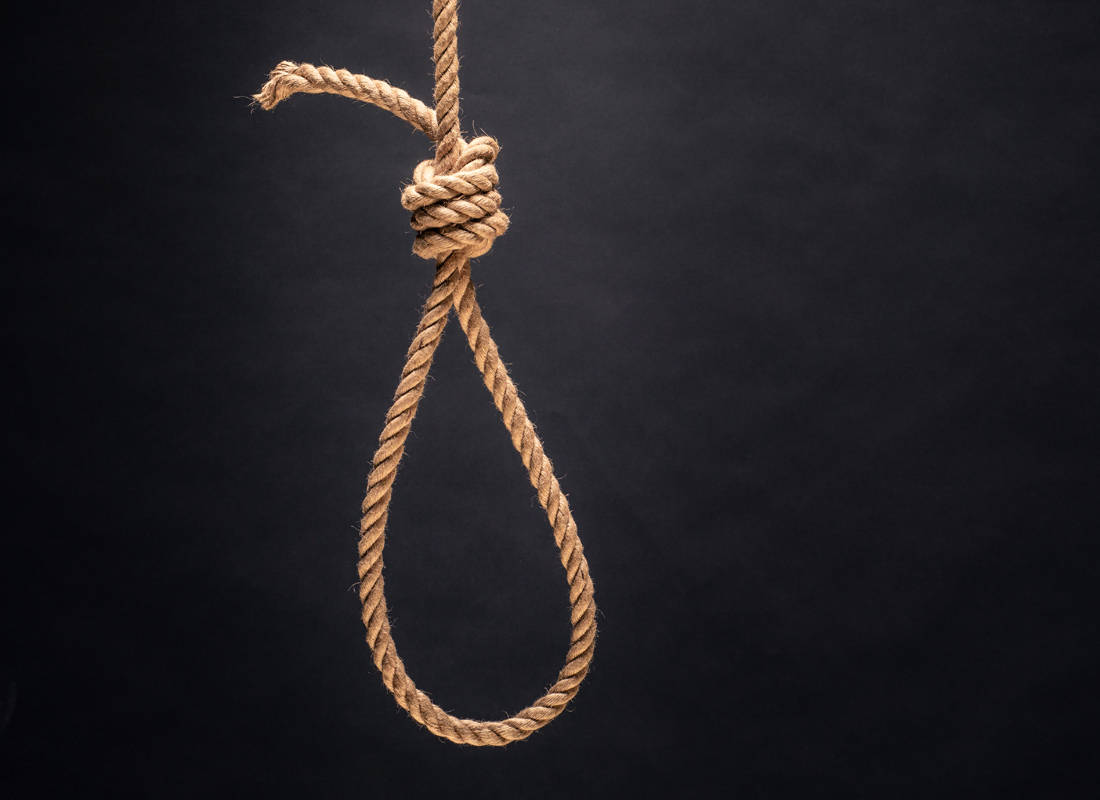
On May 10, 1956, the British colonialists hanged the two young Greek Cypriot fighters in the Central Prison of Nicosia, shocking the whole of Greece and beyond.
The streets of Athens and Thessaloniki but also of other big cities Greece filled with protesters of all ages demanding the unification of Greece with Cyprus. Reactions, however, to the hanging of the two young men were not limited to the Greek border.
Important personalities from Europe strongly expressed their reaction, after the court decision on the death sentence of Karaoli and Dimitriou, demanding its immediate abolition. Among other things, the great French philosopher, writer and author Albert Camus, who in an article published in the French newspaper "L 'Express" had written characteristically: "Once again, blind oppression preceded the uprising. […] Now comes the time of the martyrs who tirelessly, like the oppressors, manage to impose in an indifferent world the claim of a people forgotten by all but themselves. "Οι The friends of England are the first to call on her to save, first of all, Michael Karaolis and then to give him back his three-thousand-year-old homeland".
The global reaction and outcry against the former British Empire for the death sentence of 23-year-old Karaolis and 22-year-old Demetrius, was intensified even more by the courageous attitude of the convicts in front of their executioners.
Their bodies were never handed over to their families, while the British buried them in a specially designed area in the precinct of the Central Prison of Nicosia, near the gallows room and the cells of the future. The executions of Karaolis and Dimitriou were followed by a total of seven more executions, which ended with the hanging of the 17-year-old poet Evagoras Pallikaridis in 1957.
The streets named "Karaoli and Dimitriou"
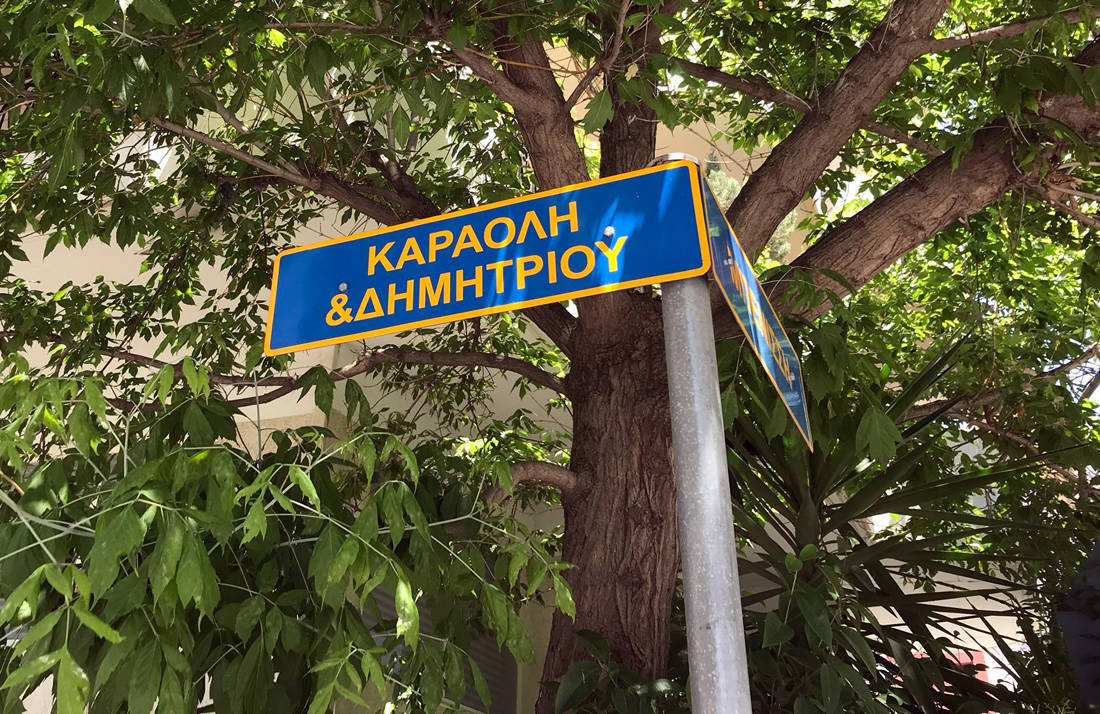
The names of the two young Greek Cypriot fighters of EOKA and heroes of Cyprus from their hanging and then literally "flooded" streets and squares - sometimes they are mentioned together and sometimes each separately - both in different cities of Greece, as well as of Cyprus.
One of the first street naming and the most characteristic one in the lower part of Loukianos in Kolonaki, between Queen Sofia and Ypsilantos. This move of the Municipality of Athens is highly symbolic, as it is the street where the building of the British Embassy was located - today the residence of the British ambassador can be found here.
In Piraeus, the former street Beat (English Admiral) was renamed after the two Greek Cypriot heroes, on which the building of the old Higher School of Industry and the modern University of Piraeus meet.
In Thessaloniki, the name "Karaoli and Demetriou" was given to a street in the area of the Governor's Office, which previously bore the name of the British Prime Minister Loud George, while today it is called "Karaoli and Demetriou of the Cypriots".
In Chania the road dedicated to the two young people passes next to the Byzantine walls, while in Alexandroupolis and Kavala it is coastal. Finally, in Ermoupolis in Syros, the "Karaoli and Dimitriou" is located just behind Miaouli Square and the famous City Hall, while it passes in front of the 1st High School of the island (built in 1834), from where Eleftherios Venizelos graduated.
